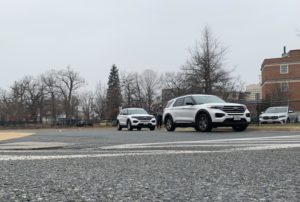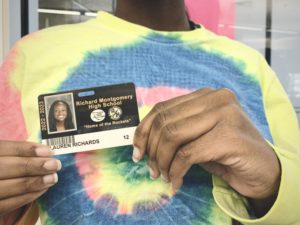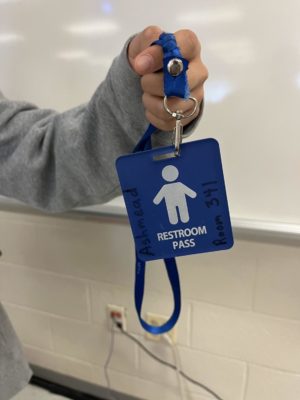The Tide’s View: ID policy should be enforced strictly or not at all
Image Courtesy of privacyinternational.org
The school ID policy should be more strictly enforced to be truly effective.
April 19, 2023
Beginning Monday, Feb. 13, a new security measure requiring all RM students to show student ID cards when entering the school building was implemented. The ID card system is intended to heighten RM security in response to the gun-related incidents that took place in January. On Jan. 13, there was a report of an individual with a handgun on RM grounds, and on Jan. 24, a former RM student was found trespassing in the school building and later arrested for possession of a gun.
To many students, implementing an ID card system feels performative. The policy addresses the issues of outsider students, not guns. In the second incident, the trespasser was a former RM student, and likely would have had an RM ID card. This problem warrants a firearm-oriented solution. However, the scope of the issue of gun violence in schools is is much larger than RM.
Schools are not equipped to deal with this problem, and it shouldn’t be their responsibility. Society as a whole must grow and adjust its attitudes in order to dismantle the normalcy surrounding school shootings. Children don’t just grow into teenagers who believe it is permissible to bring a gun into a place of learning, they adopt these attitudes and ideas from the media they consume, the headlines they read, and the world they live in.
It’s easy to point the finger at society and diffuse responsibility; one effective way to create meaningful change is at the legislative level by pushing for more comprehensive and restrictive gun controls. Last year, a student was shot by a classmate in a bathroom at Magruder High School. The weapon involved was a “ghost gun,” an unserialized firearm that can be purchased without a license as components, and then assembled independently. The victim’s mother led members of the community to push for action, and the Md. General Assembly passed HB425 and SB387, bills that criminalized the possession of ghost guns starting this March.
In some ways, it can be argued that the implementation of the ID card system at RM has increased the school’s security. The mere heightened awareness surrounding the issue of school security is one example of this. The security personnel standing at school entrances and the checking of cameras are definitely an improvement to the almost non-existent systems that were in place prior to the alarming incidents that took place this January. These measures restrict outside persons’ access to the school, and could potentially discourage people who have the intent to cause harm by establishing an observable security presence.
Currently, the ID system is too loosely regulated. It’s not hard to enter without an ID – students have reported entering the building with empty lanyards, driver’s licenses, and even index cards. Additionally, given the large student body, it seems impractical that one single security guard could even check the IDs of all the students entering the building; it isn’t hard to just slip through the entrance by blending into the large crowd of students entering. Not to mention, the ID card system is only implemented at the main entrances. This means that alternative entrances, such as the portables, would still be left unprotected in the event of a shooter.
The incidents that took place at RM served as a jarring wake-up call to what is the dismal reality of America today. The dire circumstances under which the ID card system was implemented actively demonstrate why new security measures must be taken seriously. Rather than having one security guard stationed at the front of school and expected to check everyone’s IDs, more guards should be stationed at the entrance and each student’s ID should be checked properly. If RM enforced the ID card policy more strictly, it would send the message that RM genuinely cares for the well-being of its students, and it would help the community heal from the trauma that comes with gun violence.
However, if the ID card policy can’t be treated with the seriousness it deserves, then it serves no purpose and shouldn’t be in place at all. Students and staff deserve better than to experience two traumatic events, then be comforted with a half-baked policy that isn’t keeping anyone safe.
Overall, this is a difficult problem that schools cannot address on their own, though they are facing the most direct pressure from students and their families. Even if monetary and personnel resources were hypothetically reallocated so that each school could have metal detectors, ID scanning, and more qualified, well-paid staff, measures must be implemented carefully so that our schools don’t feel like prisons.
To ensure a comfortable and effective learning environment, students must not feel intimidated, discouraged, or scared. It is up to students and parents to advocate for necessary change and work with school administrations, Board of Education members, and state and local politicians to come up with a long-term solution to school safety that is substantive and effective. In the meantime, the new security measures implemented by RM’s administration begin to scratch the surface of what is, in reality, a very complicated issue.





